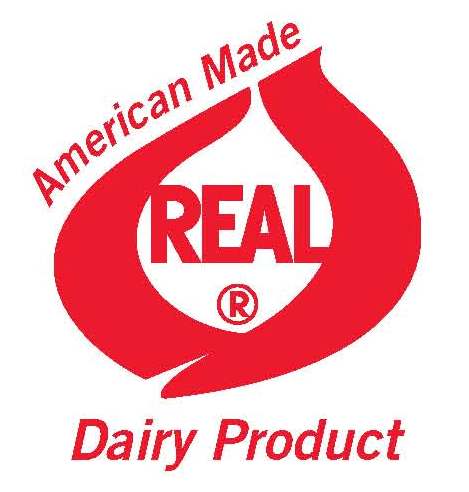NMPF to Continue Pushing Congress to Act on Farm Bill in 2012 in Lame Duck Session
November 09, 2012 With the dust settling on this week’s elections, the focus in Washington will turn to resolving unfinished business that languished during the campaign season. Congress will return to Capitol Hill next week in a lame duck session, where it will have to tackle issues such as the fiscal cliff of tax increases and budget cuts looming in January.
With the dust settling on this week’s elections, the focus in Washington will turn to resolving unfinished business that languished during the campaign season. Congress will return to Capitol Hill next week in a lame duck session, where it will have to tackle issues such as the fiscal cliff of tax increases and budget cuts looming in January.
Passing the 2012 Farm Bill is at the top of the congressional act list for NMPF, which will continue to urge the leadership in the House of Representatives to complete work on the pending farm bill. NMPF is joined in this effort by dozens of other farm, ranch and feeding organizations, who remain united in support of a new five year bill, and opposed to any temporary extension of existing programs.
Dairy farmers can use NMPF’s Dairy GREAT system to write an email to their elected officials, urging them to act on the Dairy Security Act in the remaining eight weeks of 2012.
NMPF Seats Two New Board Members at Annual Meeting; Associated Milk Producers Wins Cheese Championship
November 09, 2012 Last week, dairy producers, member cooperatives, Young Cooperators (YCs), industry representatives, staff, and others from all over the country met at the Walt Disney World Dolphin Hotel in Orlando, FL for NMPF’s annual meeting, which is held jointly every year with the National Dairy Promotion and Research Board and the United Dairy Industry Association.
Last week, dairy producers, member cooperatives, Young Cooperators (YCs), industry representatives, staff, and others from all over the country met at the Walt Disney World Dolphin Hotel in Orlando, FL for NMPF’s annual meeting, which is held jointly every year with the National Dairy Promotion and Research Board and the United Dairy Industry Association.
During the meeting, NMPF Chairman Randy Mooney and President & CEO Jerry Kozak addressed the NMPF membership and discussed the organization’s progress over the past year. They provided updates on efforts to pass a new Farm Bill that includes NMPF’s dairy policy reform package, known as the Dairy Security Act.
They also discussed other priority issues that the organization had dealt with in the past year, touching on topics like the National Dairy FARM (Farmers Assuring Responsible Management) Program, the Trans-Pacific Partnership Free Trade Agreement, and NMPF’s management of the REAL® Seal program.
Mooney and Kozak’s joint presentation emphasized the proactive attitude the organization assumed throughout the year, partly because “we face a future of reduced government support on the one hand, and more government intrusion on the other,” Mooney explained.
NMPF’s Board of Directors met during last week’s meeting and seated two new members. Donald De Jong from Dalhart, Texas was elected to represent Select Milk Producers, Inc., while Larry Webster from Buffalo, New York, was elected to represent Upstate Niagara Cooperative.
The eight officers currently serving NMPF were reelected to their existing positions. They include:
- Chairman Randy Mooney, from Rogersville, Missouri, representing Dairy Farmers of America;
- First Vice Chairman Ken Nobis, from St. Johns, Michigan, representing Michigan Milk Producers Association;
- Second Vice Chairman Cornell Kasbergen, from Tulare, California, representing Land O’ Lakes, Inc.;
- Third Vice Chairman Mike McCloskey, from Fair Oaks, Indiana, representing Select Milk Producers, Inc.;
- Treasurer Pete Kappelman, from Two Rivers, Wisconsin, representing Land O’ Lakes;
- Assistant Treasurer Adrian Boer, from Jerome, Idaho, representing Northwest Dairy Association;
- Secretary Dave Fuhrmann, from Baraboo, Wisconsin, representing Foremost Farms USA;
- Assistant Secretary Doug Nuttelman, from Stromsburg, Nebraska, representing Dairy Farmers of America.
In addition to the officer elections at this year’s meeting, NMPF recognized three outgoing directors for their service on the NMPF Board of Directors: Tom Croner, from Berlin, Pennsylvania, and Les Hardesty, from Greeley, Colorado, both representing Dairy Farmers of America, and Clyde Rutherford, Syracuse, New York, representing Dairylea Cooperative. NMPF also recognized four Honorary Directors, who provided exemplary service not only to NMPF, but also to the entire dairy industry: Lew Gardner from Galeton, Pennsylvania; along with Tom Croner, Les Hardesty, and Clyde Rutherford.
In other news at the annual meeting, a Parmesan cheese made by Associated Milk Producers Inc. (AMPI) was awarded the Grand Champion Cheese award at the 2012 NMPF cheese competition. The cheese, made in Hoven, South Dakota, received a score of 99.0 from the judges. The AMPI Parmesan was selected from among 176 entries to this year’s NMPF cheese contest – a record number of entries. A total of 3,006 pounds of cheese was judged. (Right: AMPI representatives accept the Chairman’s Plaque for their winning Parmesan.)
The 2012 NMPF Communicator of the Year award was presented to Amber DuMont Sheridan of Maryland & Virginia Milk Producers Cooperative Association in Reston, Virginia. In addition to directing Maryland & Virginia’s communications, Sheridan also oversees its Young Cooperator program.
Members of NMPF’s new 2013 YC Advisory Council met to elect their officers for the upcoming year. Kris and Carla Wardin, from St. Johns, Michigan, representing Michigan Milk Producers Association, were chosen to be the new YC Chaircouple. Nathan and Barbara Blesy, from Springville, New York, representing Upstate Niagara Cooperative, were elected YC Vice Chaircouple. David and Katherine Pyle, from New Columbia, Pennsylvania, representing Land O’Lakes, were elected Secretary Couple.
Information about the meeting, including links to speeches and presentations, is available on the NMPF website: www.nmpf.org/nmpf-joint-annual-meeting. Photos will be posted on NMPF’s Facebook page and Flickr account.
CWT-Assisted Cheese Exports Top 100 Million Pounds
November 09, 2012During the month of October, Cooperatives Working Together (CWT) received 82 requests for export assistance on cheese, butter, anhydrous milk fat (AMF) and whole milk powder (WMP). It provided assistance on 33 cheese bids, 12 butter bids, one AMF and one WMP bid. Shipments of the product were to be delivered through April 2013 to 35 countries on four continents.
Through the end of October, the total amount of CWT-assisted cheese exports was 106.3 million pounds of Cheddar, Colby, Gouda and Monterey Jack. Butter exports were 61.2 million pounds for the same period. The milk equivalent of these exports was 2.3 billion pounds on a milkfat basis, equal to 64% of the 3.6 billion pounds of increased milk produced in 2012.
According to an analysis by Dr. Scott Brown, an agricultural economist at the University of Missouri, CWT’s export assistance shipments in 2012 will add 43 cents per hundredweight to the All Milk price.
As a result of its efforts, CWT’s Export Assistance Program continues to provide dairy farmers with an outstanding return on investment.
NMPF Takes First Steps in Revitalizing the REAL® Seal with New Website
November 09, 2012 As part of its efforts to revitalize one of the most recognized product symbols in the food industry, NMPF announced last month that the REAL® Seal is undergoing a makeover. The first step in that process involved the launch of a revamped website: www.realseal.com.
As part of its efforts to revitalize one of the most recognized product symbols in the food industry, NMPF announced last month that the REAL® Seal is undergoing a makeover. The first step in that process involved the launch of a revamped website: www.realseal.com.
The previous website existed primarily as a resource for dairy product manufacturers and marketers interested in putting the REAL® Seal on their packaging. The new website will contain more content to educate consumers about why they should look for the REAL® Seal on the foods they buy, while also continuing to provide information for those companies using the REAL® Seal to enhance their product marketing.
“Research has found that 93 percent of consumers know of the REAL® Seal, and that many people find it useful in making buying decisions,” said Jerry Kozak, President and CEO of NMPF.
Effective March 15, 2012, the management of the REAL® Seal program was transferred from the United Dairy Industry Association to NMPF. This change was the result of an agreement between the two organizations that the transfer was the best opportunity to place a renewed emphasis on highlighting the importance and value of American-made dairy foods.
“Imitation products made from vegetables and nuts, but packaged like real dairy products and often using dairy names, have proliferated in the last few years,” said Kozak. “For example, frozen desserts made out of soybeans are packaged the same as real ice cream made from cows’ milk, with pictures that make it look like real ice cream. The only way a consumer would know the product isn’t ice cream is by reading the ingredients label.”
The same is true for other processed foods made with imitation dairy products, noted Kozak.
“Currently, frozen pizza is essentially the only processed food that uses the REAL® Seal. We intend to expand the products eligible to use the REAL® Seal beyond that that category.”
To address expanded use of the REAL® Seal, the seal itself is in the process of being tailored to other applications. Terms like “Made With” real dairy, and “American Made,” along with specific dairy product names, will be stacked above and below the basic REAL® Seal.
NMPF’s goal is to have a fully integrated program up and running early in 2013.
National Dairy FARM Animal Care Program Findings Demonstrate Widespread Adherence to Guidelines
November 09, 2012A report issued last month about the National Dairy FARM Animal Care Program found that overall, its subscribers are doing a thorough job of adhering to its multi-faceted approach to comprehensive dairy animal well-being.
Voluntary, and open to all producers in the United States, Farmers Assuring Responsible Management (FARM) is a national set of guidelines designed to demonstrate dairy farmers’ commitment to outstanding animal care and a quality milk supply. Cooperatives, proprietary milk processors, and individual dairy producers are using the program to assure consumers that the food they purchase is produced with integrity.
Since enrollment began in September 2010, the FARM Animal Care Program has been implemented on dairy farms accounting for 41 percent of the nation’s milk supply. With continued expansion of enrollment, participation in the FARM program is anticipated to exceed 70 percent of the nation’s milk supply in 2013.
Participating producers are provided comprehensive training materials and undergo an on-farm evaluation conducted by a trained veterinarian, extension educator, co-op field staff member, or other FARM-trained professional. Evaluators then provide a status report and, if necessary, recommendations for on-farm improvement.
In June 2012, data collected from the more than 5,000 second-party evaluations made of the dairy operations enrolled in FARM program was reviewed and analyzed to determine the effectiveness of on-farm implementation. A summary of those results is available online.
“While we’re seeing near nearly universal adoption of the best practices from the FARM animal care manual,” said Jamie Jonker, Vice President of Scientific and Regulatory Affairs at NMPF, “some specific practices have not achieved the same level of adoption as others. This demonstrates the importance of continuous improvement and on-going education as advocated by the program.”
Jonker cited several examples of where adherence is greatest, as well as where improvements are needed:
- 99.2% of farm operators engage in dairy animal observations to identify any potential health issues;
- 99% of farm operators train personnel to handle and restrain calves with a minimum of stress to the animal;
- 95.5% of farm operators train personnel in proper methods to move non-ambulatory animals;
Meanwhile:
- 72.7% of farm operators have emergency plans to address animal care needs stemming from unique circumstances such as a natural disaster;
- 68% of farm operators apply antiseptic to the navels of calves after birth as a preventative health measure.
To protect the integrity and credibility of the program, the FARM program utilizes an independent third-party process to ensure that its practices are being appropriately adopted and the educational materials and methodologies used in training both farm operators and evaluators is sound and effective. Each year, a nationwide sample of dairy farms in the program is randomly selected for visits from third-party “verifiers” to assure (to a 95% confidence interval) that the observations recorded during the second-party evaluations are valid. Validus, an Iowa-based certified auditing company with more than 10 years of experience with farm animal care programs, is used to conduct the third-party verification process.
The initial third-party verification of the FARM program was conducted in 2011, with analysis of that process completed earlier this year. This analysis confirmed that effective implementation of the FARM program is occurring through producer education and on-farm evaluation. The objective third-party verification for 2012 is currently underway.
New Antibiotic Residue Prevention Manual Now Available to Dairy Producers
November 09, 2012NMPF has released a revised version of its Milk and Dairy Beef Drug Residue Prevention Manual for 2013. As an area of focus for the National Dairy FARM ProgramTM, the manual can be found online.
The Milk and Dairy Beef Drug Residue Prevention Manual is a concise review of appropriate antibiotic use in dairy animals. The manual is a quick resource to review those antibiotics approved for dairy animals and can also be used as an educational tool for farm managers as they develop their on-farm best management practices necessary to avoid milk and meat residues.
Additions to the 2013 version include a section on avoiding potential residue violations from extra-label drug use in an unapproved class of cattle, cephalosporin extra-label use prohibitions, as well as an updated drug and test kit list. The 2013 manual includes a certificate of participation that can be signed by a producer and his/her veterinarian to demonstrate their commitment to the proper use of antibiotics.
The Residue Avoidance manual was sponsored by Charm Sciences, IDEXX, and Pfizer Animal Health. No check-off funds were used in the development and distribution of this manual.
2012 Edition of NMPF Dairy Data Highlights Now Available
November 09, 2012Just as in baseball, the best teams in dairy production track and use statistics to ensure their success. The best compilation of dairy statistics is now available in the latest edition of NMPF’s Dairy Data Highlights.
Dairy Data Highlights is a collection of 53 tables and 19 graphs that provides state-by-state and national metrics on all aspects of milk production from the recent past through 2011. This includes cow numbers, feed costs, relative prices, the sales of milk and dairy products, the difference between farm and retail prices, and trends in dairy products production. The booklet also tracks export and import information. Dairy Data Highlights has been published annually by NMPF for more than 60 years.
Dairy Data Highlights is available to NMPF member cooperatives and associate members for a per-copy price of $7.50 for orders up to 10 copies, and $5 per copy for orders larger than 10. For non-members, the per-copy price is $10.00 up to 10 copies, and $7.50 each for more than 10.
Visit the NMPF website to learn how you can order copies.
USFRA to Host Food Dialogues Meeting in New York
November 09, 2012New York City serves as the host location for the third installment of the U.S. Farmers and Ranchers Alliance (USFRA) Food Dialogues. On November 15, three panel discussions will tackle some of the most discussed topics in food today: antibiotics, biotechnology (GMOs), and how mass media and advertising influence consumers’ food choices. The panels reviewing these topics bring together a diverse group of journalists, consumer influencers, leaders, farmers, and ranchers for an in-depth conversation about food. All panel discussions will be streamed live on the fooddialogues.com website. In addition, a special Twitter handle (#FoodD) will encourage social media discussion on Thursday.
Also next week, consumers and others can vote to winnow the nine finalists for the Faces of Farming and Ranching contest held by USFRA. More than 100 people entered the contest for their opportunity to become one of the faces of agriculture – those who will be sharing stories and experiences on a national stage to help shift conversations about food production and set the record straight about the way we feed our nation.
Starting on November 15, and running until December 15, people can visit www.fooddialogues.com to learn more about each of the nine finalists and the work they do. Two of the nine are dairy farmers.
Consumers are asked to vote for who they believe best represents farmers and ranchers who work to bring food to the table. These votes, along with the recommendation of a panel of judges, will be factored into the decision to determine the Faces of Farming and Ranching.





